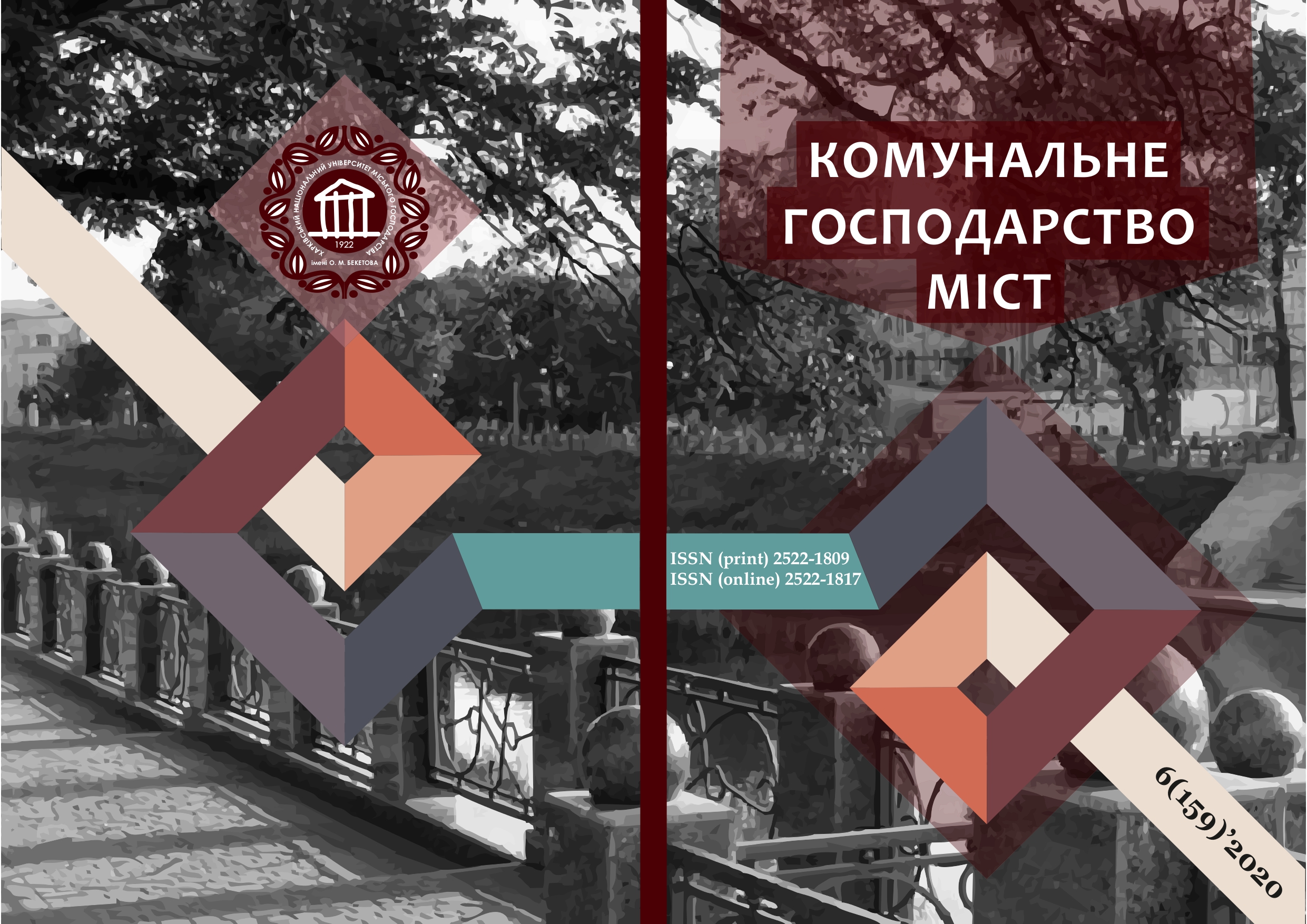THE SEMIОTIC NATURE OF THE SPATIAL STRUCTURE OF MODERN PROPERTY
Array
Keywords:
spatial structure, cities, semiotics, intangible, «culture of the city dweller», aesthetics, «architectural code»Abstract
The article determines the semiotic nature of the spatial structure of the modern city, clarifies the reasons and conditions of its transformation under the influence of intangible factors. The city is determined by the main expression of the spatial structure, oriented to the person. Despite the unity and integrity of the city, its internal organization indicates the presence of a sufficient number of relatively autonomous elements and a variety of communication links that carry a semantic and value load. Based on the fact that the city and its space have always been a synthesis of various functional processes, united by one or another system of communications, the relationship between them was influenced by tangible and intangible factors. At the same time, the intangible is what unites the city at the existing semantic level. Historically, it was the presence of a spiritual or cultural center in the settlement that gave it urban status. Functional indicators of the intangible are defined as a person's desire to remain part of this space, to form its structure. It is established that if the material component of the city is formed in the process of interconnection of existing stationary processes and communication links, the intangible - gives the existing processes a value aspect, and at the same time acts as one of the elements of communication. If in the material sense communications are roads, means of communication, engineering and technological networks, etc., then intangible communications are faith, and also associative connection of each inhabitant of the city, with this city, its space, understanding of needs of development of city territory. Intangible communication forms a set of symbols, which ultimately make it possible to develop a "brand" of the city as an ideal space. The formed intangible semiotic signs of the city encode the perception and understanding of the human environment. Thanks to the signs, a person gives the surrounding space certain meanings, there is a distinction of own (personal, individual) space and its relationship with the space of another person, with the space of all city dwellers, as well as with the spatial structure of the city or urban system. It is established that the city as a living space has undergone a long evolution and transformation of all structures, the end result of which was the formation of a separate urban space as a self-sufficient clearly separated area, where the functional level of human life.
References
2. Berestovskaja, D. S., Petrenko, A. P. (2017). Arhitekturnoe prostranstvo goroda: semioticheskij podhod. Urbanistika. № 1. S. 24–34. URL: https://nbpublish.com/library_read_article.php?id=22489
3. Vysochyn, I.A. (2015). Vplyv mihratsiinykh protsesiv na formuvannia struktury mistobudivnoho obiekta. Visnyk Natsionalnoho universytetu «Lvivska politekhnika». Arkhitektura, № 836. S. 95–104.
4. Hlavatskyi, O.Z. (2015). Poniattia ta struktura miskoho seredovyshcha. Mistobuduvannia ta terytorialne planuvannia, Vyp. 55. S. 60–72.
5. Kosmii, M.M. (2020). Nematerialni chynnyky v prostorovii orhanizatsii ta rozvytku mist. Suchasni problemy arkhitektury ta mistobuduvannia: Nauk.-tekhn. zbirnyk / Vidpov. Red. V.V. Tovbych. K., KNUBA, Vyp. 56. S. 218–233.
6. Lotman, Ju.M. (1996). Semioticheskoe prostranstvo. Vnutri mysljashhih mirov: Chelovek – Tekst – Semiosfera – Istorija. M. : «Jazyki russkoj kul'tury», 1996. S. 163–175.
7. Teoretychni ta metodychni osnovy arkhitekturnoho proektuvannia. Osnovy mistobuduvannia : konspekt lektsii dlia stud. 3 kursu dennoi formy navch. spets. 6.120100. «Mistobuduvannia», napriam. «Arkhitektura» / uklad.: O.S. Soloviova. Kh. : KhNAMH, 2008 36 s.
8. Turbina, E.G. (2011). Gorod v teorii: opyty osmyslenija prostranstva. M.: Novoe literaturnoe obozrenie. 520 s.
9. Tyheeva, Ju. C. Chelovek v gorodskom prostranstve (Filosofsko-antropologicheskie osnovanija urbanologii). URL: https://www.mosgu.ru/nauchnaya/publications/professor.ru/Tyheeva/
10. Jeko, U. (2004). Otsutstvujushhaja struktura. Vvedenie v semiologiju. Perev. s ital. V. Reznik, A. Pogonjajlo. SPb.: Symposium, 2004. 544 s.
11. Jeko, U. (2007). Rol' chitatelja. Issledovanija po semiotike teksta [Perev.: S. Serebrjanyj]. SPb.: Simpozium. 512 s. URL: https://www.litmir.me/br/?b=545802
Downloads
Published
How to Cite
Issue
Section
License
The authors who publish in this collection agree with the following terms:
• The authors reserve the right to authorship of their work and give the magazine the right to first publish this work under the terms of license CC BY-NC-ND 4.0 (with the Designation of Authorship - Non-Commercial - Without Derivatives 4.0 International), which allows others to freely distribute the published work with a mandatory reference to the authors of the original work and the first publication of the work in this magazine.
• Authors have the right to make independent extra-exclusive work agreements in the form in which they were published by this magazine (for example, posting work in an electronic repository of an institution or publishing as part of a monograph), provided that the link to the first publication of the work in this journal is maintained. .
• Journal policy allows and encourages the publication of manuscripts on the Internet (for example, in institutions' repositories or on personal websites), both before the publication of this manuscript and during its editorial work, as it contributes to the emergence of productive scientific discussion and positively affects the efficiency and dynamics of the citation of the published work (see The Effect of Open Access).

